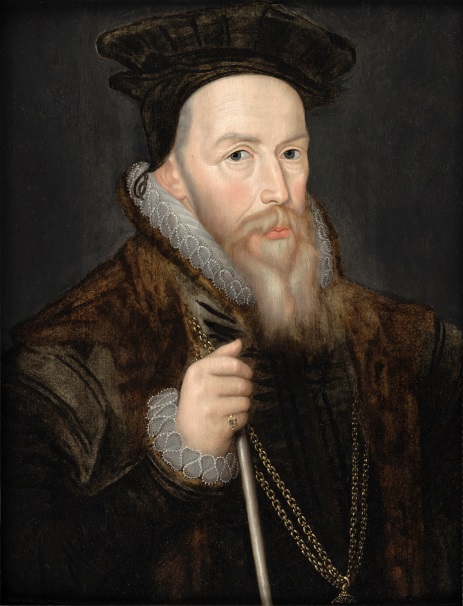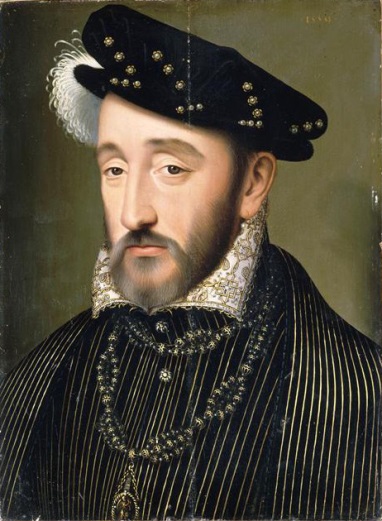Regent Moray: Life Story
Chapter 5 : Rebellion
At this point, all-out civil war seemed likely. Queen Marie was seriously ill, but a new army was raised under the Duke of Chatelherault and her French councillor, d’Oysel. The opposing armies marched into Fife but Lord Lindsay was able to negotiate an agreement whereby the French troops would withdraw, the Queen Regent would be able to enter Fife, should she choose to, but the Protestants would be granted freedom of religion. In return, the Lords of the Congregation would disband their army.
The mob which had rioted in Perth was now advancing on Scone Abbey. This ancient abbey was an important symbol of the Scottish Crown and the Lords of the Congregation had no more desire to see it damaged that had Queen Marie. Knox also disapproved of rioting and rebellion. He joined with Lord James and the Earl of Argyll to try to prevent the destruction but even his word was not sufficient to prevent the sacking of the Abbey and the Palace nearby.
Lord James, Argyll and Knox left Perth with their army and captured Stirling. This was a significant gain for the Lords, as Stirling’s location made it key to the holding of Scotland. In the early morning of 30 th June 1559 the army of the Lords of the Congregation marched into Edinburgh. Almost overnight, the city was denuded of the outward symbols of the Catholic faith. The Regent issued orders to the Congregation to leave Edinburgh within six hours but her orders were ignored.
Marie sent for troops from France and the Lords retaliated by again requesting help from England. Elizabeth I, who disliked Knox almost as much as Queen Marie did, refused to be seen to openly aid rebellious subjects. There was also some doubt in English minds as to whether the Lords of the Congregation were really defending religion or were merely hoping to benefit themselves. Nevertheless, William Cecil worked on Elizabeth to support the Lords in secret.

Once the Protestants had captured the Royal Mint, Marie decided to march on Edinburgh although she did not have sufficient troops. She captured Leith but neither side was anxious for outright war. Another agreement was reached whereby the people of Edinburgh could choose their form of worship - the Protestants could worship in St Giles Kirk, where Knox had been set up as Minister, and the Roman Catholics could hear mass at Holyrood. The Congregation would return the coining irons for the royal mint, hand over Holyrood Palace, which they had captured, and withdraw from the city. They would continue in their allegiance to Queen Mary (still in France) and the Regent.
Whether this would have been a long-term solution is doubtful – Marie had shown that her word could not always be trusted, and it is hard to imagine that Knox would have tolerated the continuance of Catholicism. But before the agreement could be tested, a cataclysmic event in France changed the scene entirely. Henri II, who had been a strong support of Marie, was killed in a jousting accident. The new King of France, the husband of Mary, Queen of Scots, was young and in poor health. It was also obvious that the new King and Queen would be dominated by Mary’s trenchantly Catholic uncles, the Duke of Guise and the Cardinal of Lorraine, who were the brothers of the Regent.

For both England and the Scots, who were uncomfortable with French power, this turn of events seemed to presage an even stronger domination of Scotland by France.This fear (together with a hint that Elizabeth I might marry his son, the Earl of Arran) was one of the levers used to persuade the Duke of Chatleherault to abandon the Regent. Arran, who had been held as a hostage in France until smuggled out by the English ambassador, had converted to Protestantism and with his return to Scotland he was able to persuade his father to join the Lords of the Congregation.
The Lords, including Lord James, marched into Edinburgh and suspended Marie’s position as Queen Regent. Allegiance to Queen Mary and King François was confirmed, but the role of the Regency would be taken by a Council of 30 including Lord James. This did not resolve the situation, as French troops were approaching and it was by no means certain that the Lords of Congregation could resist them.
To a degree, the motives of the Lords were still suspect. Cecil wrote a memorandum for Queen Elizabeth, with a list of actions that England’s emissary, Ralph Sadler, ought to undertake in Scotland, which included not just ‘nourishing’ the faction against the French, but also:
‘To explore the very truth, whether Lord James enterprises towards the Crown for himself or no? And if he do, and the Duke [Chatelherault] be cold in his own cause, it may not be amisse to let Lord James follow his own device, without interference.’ That is, that England should not interfere to prevent James from usurping his sister’s crown.
There is no evidence as to whether James had any immediate intentions in this direction, but he cannot have helped believing that it would be better for him to be King of Scots, than for vicarious rule from France, which looked set to continue indefinitely.
Lord James Stewart
Family Tree






